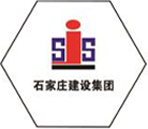
Dec . 10, 2024 03:10
Back to list
Pressure Reduction Techniques for Enhanced Performance and Safety
Understanding Pressure Relief Valves An Essential Component of Safety
In various industries, managing pressure is crucial for ensuring the safety and efficiency of operations. Among the myriad of equipment designed for this purpose, pressure relief valves (PRVs) stand out as essential components in preventing hazardous situations. These valves serve a critical role in protecting systems from overpressure, which can lead to catastrophic failures and significant economic losses.
What is a Pressure Relief Valve?
A pressure relief valve is a safety device designed to automatically release excess pressure from a system. This valve operates by opening at a preset pressure level, allowing fluids—whether gas or liquid—to escape. Once the pressure returns to a safe level, the valve closes, re-sealing the system. This automatic function ensures that equipment and structures are safeguarded against pressures that exceed their design capabilities.
Types of Pressure Relief Valves
Pressure relief valves come in different types, each suited for specific applications. The most common types include
1. Spring-Loaded Valves These are the most prevalent type of PRVs. They consist of a spring that holds the valve closed until the pressure exceeds the set point. The valve opens, releasing fluid until conditions normalize.
2. Pilot-Operated Valves Designed for high-pressure applications, these valves use a pilot mechanism to control the main valve. They are particularly beneficial in maintaining tight shut-off when not in operation.
.
Applications of Pressure Relief Valves
مزلقة تخفيض الضغط

PRVs are utilized across various industries, including
- Chemical Processing In facilities where reactive chemicals are stored and processed, PRVs prevent dangerous overpressure scenarios, reducing the risk of explosions or leaks.
- Oil and Gas In exploration and extraction processes, PRVs are critical for maintaining safe operating conditions in pipelines and refineries.
- Manufacturing Many manufacturing processes involve pressurized systems, such as boilers and hydraulic systems, where PRVs help maintain safe pressure levels.
- HVAC In heating, ventilation, and air conditioning systems, pressure relief valves prevent equipment damage due to excessive pressure.
Importance of Regular Maintenance
While pressure relief valves are designed to enhance safety, they require regular inspection and maintenance to ensure reliable operation. Over time, factors such as corrosion, wear, and buildup can affect their performance. Therefore, it is essential for industries to implement routine checks and replace valves as necessary.
The American Society of Mechanical Engineers (ASME) sets standards for PRVs, and following these guidelines will help maintain compliance and safety in operations. This includes setting the correct pressure settings and ensuring that the valves are appropriately sized for the application.
Conclusion
In conclusion, pressure relief valves are vital for the safety and efficiency of numerous industrial operations. By preventing overpressure situations, these valves protect both personnel and equipment, playing an instrumental role in the overall risk management strategy of any facility. As industries continue to evolve and innovate, the importance of reliable pressure relief systems will remain paramount. Regular maintenance and adherence to safety standards will ensure these critical safety devices function correctly, protecting operations from the potential dangers of excessive pressure. Investing in the right equipment and taking proper care to sustain it will lead to enhanced productivity and safety in any industrial environment.
Latest news
-
Safety Valve Spring-Loaded Design Overpressure ProtectionNewsJul.25,2025
-
Precision Voltage Regulator AC5 Accuracy Grade PerformanceNewsJul.25,2025
-
Natural Gas Pressure Regulating Skid Industrial Pipeline ApplicationsNewsJul.25,2025
-
Natural Gas Filter Stainless Steel Mesh Element DesignNewsJul.25,2025
-
Gas Pressure Regulator Valve Direct-Acting Spring-Loaded DesignNewsJul.25,2025
-
Decompression Equipment Multi-Stage Heat Exchange System DesignNewsJul.25,2025

